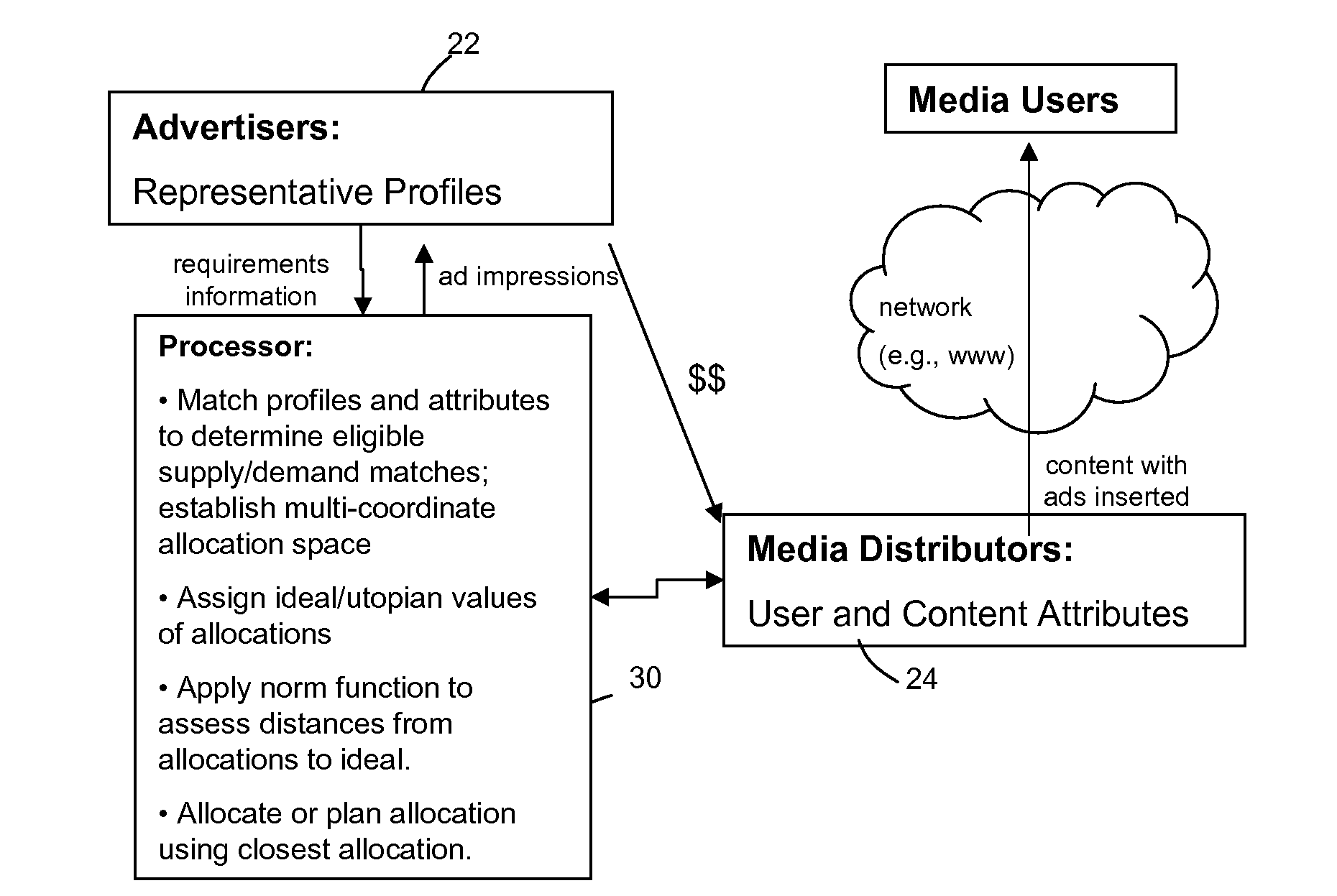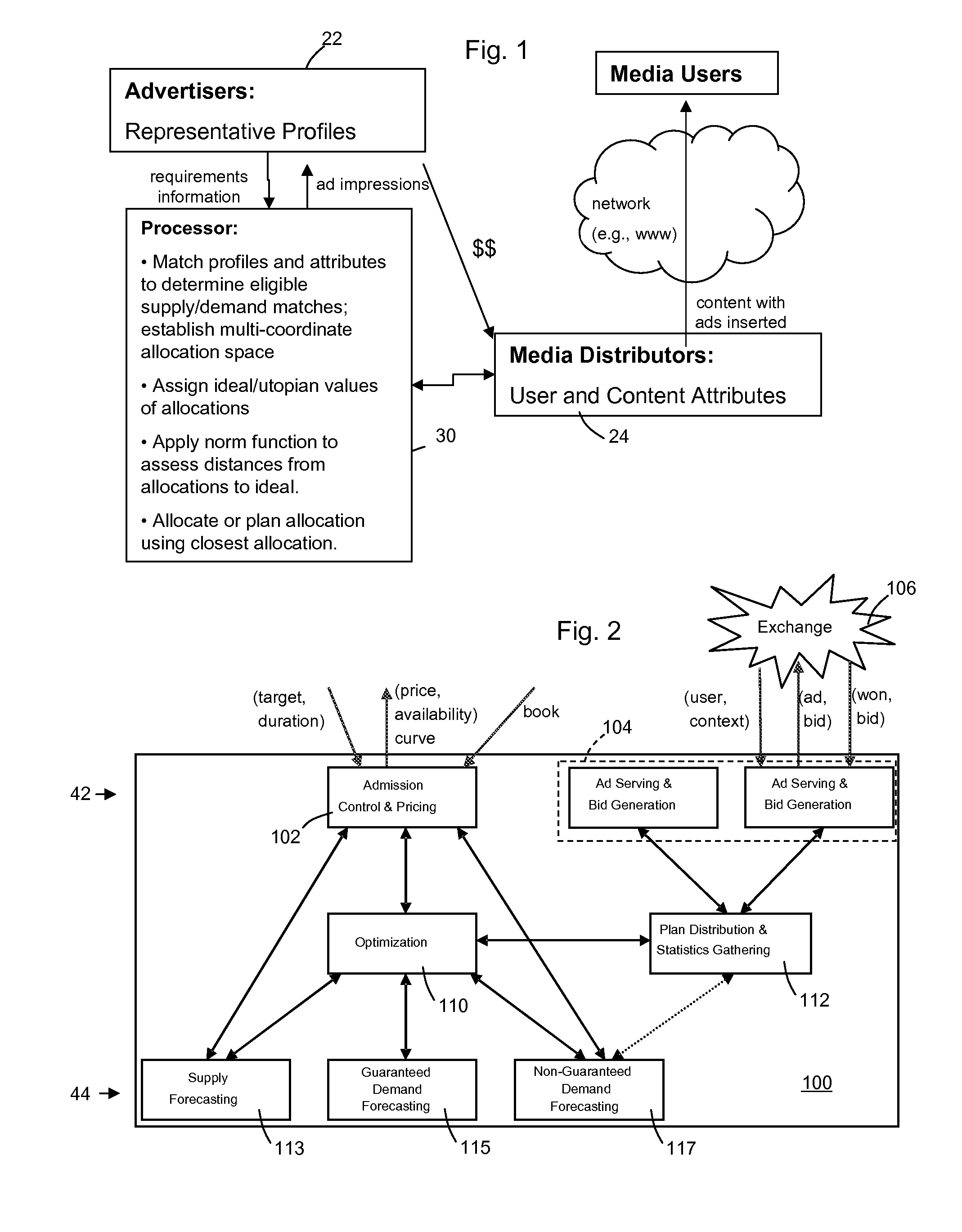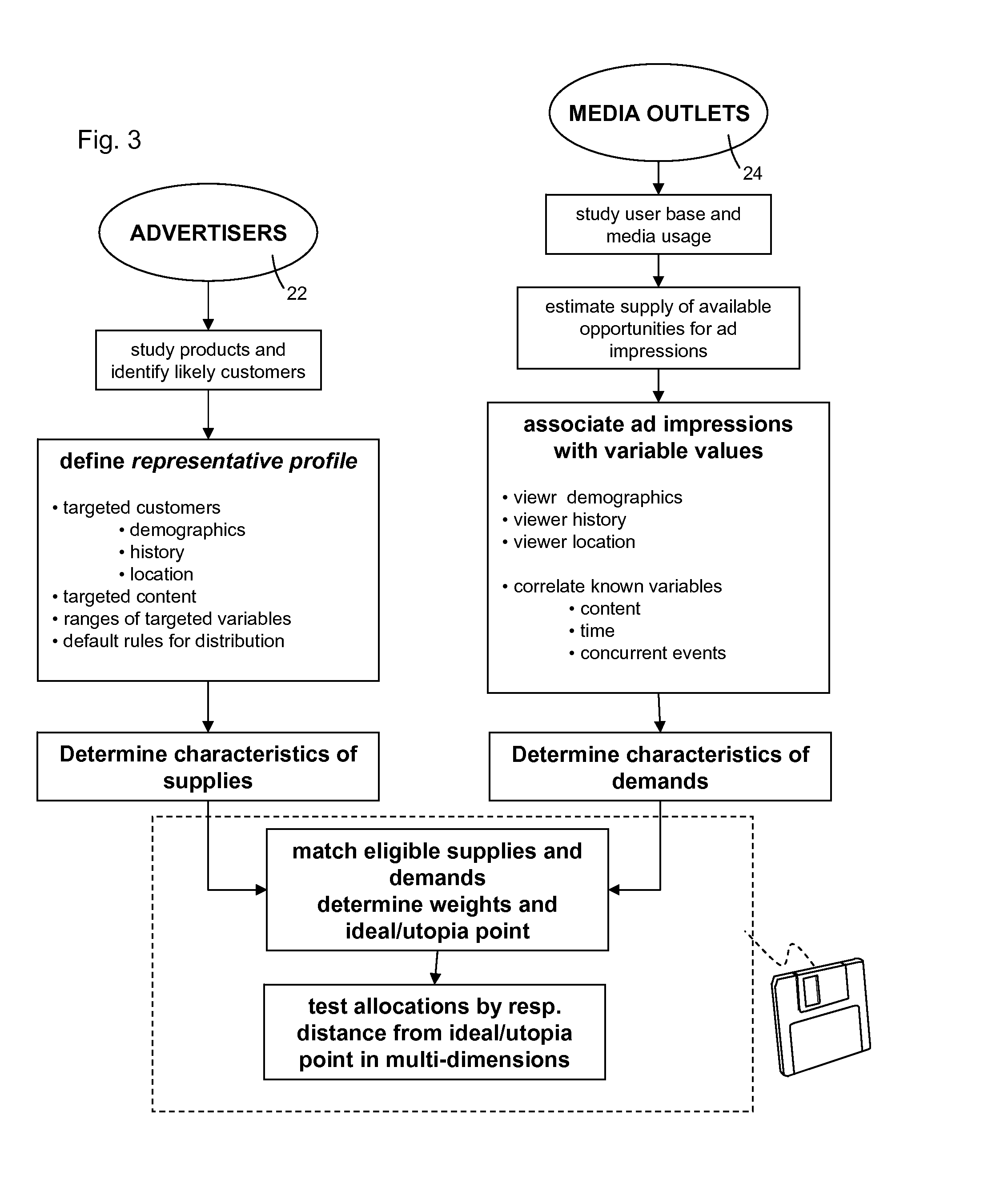Method of programmed allocation of advertising opportunities for conformance with goals
a technology of programmatic allocation and advertising opportunities, applied in the field of programmatic allocation of advertising opportunities to achieve the effect of achieving the effect of conforming to goals, and avoiding overlap between subsets correlated to advertising targets, etc., and avoiding the effect of providing a s
- Summary
- Abstract
- Description
- Claims
- Application Information
AI Technical Summary
Benefits of technology
Problems solved by technology
Method used
Image
Examples
second embodiment
[0102] a weighted l2 norm can be used where weighted differences are squared and summed, and the square root of the sum represents a straight line difference between two multi-dimensional points. The l2 norm is a quadratic programming solution.
third embodiment
[0103]A third embodiment is base on a weighted l∞ norm. In that event, the distance from the utopia point is defined as the maximum difference in any dimension for each allocated increment. This is also a linear programming solution. The three exemplary norm equations, which are alternatives, are represented as:
x1-x_11w=∑i=1mwixi1-x_i1x1-x_12w=∑i=1mwi(xi1-x_i1x1-x_1∞w=max{wixi1-x_i1,∀i}
where w=(w1,w2, . . . ,wm)≧0 is the weight vector and can be different for each supply index value i.
[0104]A possible situation is that the utopia point is zero on all coordinate axes. In that case, xi1=0 and the weight factor is the reciprocal of the extent of the supply:
wi=1si.
The l∞ norm equation can be written as a linear programming model as follows:
min=x1-x_1s.t.xi1≤si,∀i∑ixi1=d1xi1si≤y1,∀ixi1≥0,∀i
The solution achieves proportional allocation, i.e.,
xi1si=xj1sj.
[0105]The multi-objective version of the optimization model is shown in FIG. 5. In this illustration it is possible to choose to satisfy ...
PUM
 Login to View More
Login to View More Abstract
Description
Claims
Application Information
 Login to View More
Login to View More - R&D
- Intellectual Property
- Life Sciences
- Materials
- Tech Scout
- Unparalleled Data Quality
- Higher Quality Content
- 60% Fewer Hallucinations
Browse by: Latest US Patents, China's latest patents, Technical Efficacy Thesaurus, Application Domain, Technology Topic, Popular Technical Reports.
© 2025 PatSnap. All rights reserved.Legal|Privacy policy|Modern Slavery Act Transparency Statement|Sitemap|About US| Contact US: help@patsnap.com



